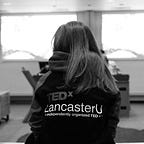Design Futures — imagination, big questions and aliens.
Imagination is such a powerful vision of the future, way stronger than many other motivating factors.
David Delgado and Dan Goods, The Future Starts Here (2018)
I will always remember the movie ‘The Discovery’ (2017) directed by Charlie McDowell, which tells a story around a fictional, near future scientific discovery — a proof of life after death. The discovery results in an immense increase in suicide rates around the world. As much of a disturbing and alarming vision it is, it is also strikingly logical, accurate and demonstrates the impact of a major event on the society.
Now imagine humans suddenly discover life in space — a message coming from another planet.
How would this ground-breaking event, which would undoubtedly start a new era similar to the one when the first man put his feet on the Moon, affect humans? (and would it be ground-breaking for the aliens too?) How would governments act? Would the most powerful countries fight for the rights to communicate with them? How would it all affect civilians? Would more people start joining the army? Would the fact that we are not alone in the universe intimidate or uplift people? Would there be riots and movements against making contact with the aliens? Would people start caring about the natural environment more, or even less? How would faith groups act on it? How would it impact the sci-fi industry? What would Elon Musk do?!
How would the economy and businesses react and use this major event? Would new technologies and services be created? Would they be security-oriented, like ‘build a bunker in your garden’ service or rather positive ‘alien-friendly café’ services? What would the newspaper cover or Twitter post announcing the news look like?
The list of questions is endless.
This very extreme example aims to show that the primary step of speculative design and futures design approach is asking questions. It is the search for answers and digging into an issue, as well as imagination, curiosity and ability to think broadly, that make the foundation of every speculative project. The questions also trigger heated discussions and initiate critical thoughts, which are followed by future trend research and understanding the future society to find the possible answers.
Designing for the future encompasses thinking about numerous fascinating aspects of the world. We as designers have to consider the possible major and minor events, emerging tech, politics and economy, moods in the society in the future. Especially the moods in the society. And people’s future behaviours, believes and fears. Moreover, asking all those big questions and trying to find answers is crucial in the design approach. As in any design project, it is necessary to firstly understand the surrounding world and society to later deliver the best, human-centred ideas. It is, however, a very difficult task. It is not easy to step in someone else’s shoes, especially if the shoes do not yet exist.
The recent ‘The Future Starts Here’ exhibition at the Victoria & Albert Museum in London showed how miscellaneous and how shocking futuristic projects can be. From shooting stars on demand, jaw-dropping cryonics tools and artefacts to a house plan designed to prolong one’s life. The exhibition was a brilliant example of connecting service design with design fiction and foresight. Design fiction, with its level of realism and narrative structure, as well as the presence of new technologies, provides a great opportunity to explore new kinds of services (Pasman, 2016). If there was a product or a service designed around people finding out we are not alone in the universe, it would definitely match the other exhibited projects. It would go well not only with their brilliant madness, but also this weird feeling of probability and reality. After all, humans already try to contact extra-terrestrial beings. And… they can respond any time.
References
McDowell, C., 2017. The Discovery. Netflix.
Pasman, G., 2016. Design Fiction as a service design approach.
The Future Starts Here, 2018. V&A Publishing.
